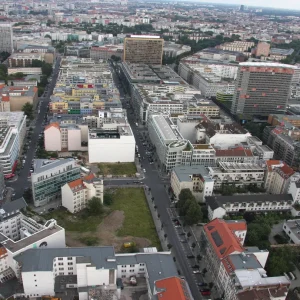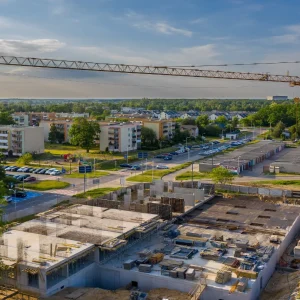
In an era where information spreads rapidly and widely, misinformation and disinformation have become significant challenges across various sectors. Urban policy, planning, and transportation are particularly susceptible, given their reliance on public engagement, trust, and accurate data. This article explores the multifaceted impacts of misinformation and disinformation on these critical areas and examines how policymakers and planners can mitigate these threats.
Understanding Misinformation and Disinformation
Misinformation refers to false or inaccurate information spread without malicious intent. Disinformation, on the other hand, is deliberately misleading or biased information, manipulated to deceive. Both can have profound effects on public perception, decision-making, and policy outcomes.
The Role of Information in Urban Policy and Planning
Urban policy and planning are inherently data-driven. Accurate information is essential for developing effective strategies, making informed decisions, and gaining public support. Planners rely on demographic data, economic forecasts, environmental studies, and community feedback. When misinformation infiltrates these processes, it can derail projects, waste resources, and erode public trust.
Transportation and the Information Ecosystem
Transportation systems depend heavily on public cooperation and accurate communication. From traffic updates to public transit schedules, any disruption in the flow of correct information can lead to chaos. For instance, false reports of road closures or incorrect public transport schedules can cause significant inconveniences and even safety risks.
Impacts of Misinformation and Disinformation
Public Trust and Engagement
One of the most insidious effects of misinformation is the erosion of public trust. Urban projects often require community buy-in and participation. When the public is fed incorrect information, their trust in the authorities diminishes. This scepticism can lead to resistance against necessary infrastructure projects, delayed implementations, and increased costs.
Case in Point: The 5G Rollout
During the rollout of 5G technology, several urban areas faced resistance due to widespread misinformation about health risks. Despite scientific evidence to the contrary, fear-mongering led to public protests and vandalism of infrastructure. This not only delayed the rollout but also increased costs and strained community relationships.
Policy Formulation and Implementation
Policymakers depend on accurate data to devise effective strategies. Misinformation can lead to flawed policies that fail to address the real issues. For example, if crime data is misrepresented, resources might be misallocated, leaving some areas underserved and others over-policed.
Example: Covid-19 Mobility Trends
During the Covid-19 pandemic, misinformation about virus transmission influenced public behaviour and mobility patterns. Incorrect beliefs about safety in public transport versus private vehicles affected transportation planning. Cities had to scramble to adjust their strategies based on fluctuating and often inaccurate public perceptions.
Economic Implications
Urban planning projects often involve significant investments. When decisions are based on inaccurate information, it can lead to financial losses. Misguided projects can drain public funds and discourage future investments in urban development.
Scenario: False Claims in Real Estate Development
In some cities, disinformation about the potential impacts of new developments—such as exaggerated claims of environmental harm or overstated economic benefits—can skew public opinion and political decisions, leading to either the halting of beneficial projects or the approval of unsustainable ones.
Strategies to Combat Misinformation and Disinformation
Enhancing Public Communication
Clear, transparent, and proactive communication from urban planners and policymakers can help counteract misinformation. Engaging with the public through multiple channels and providing easily accessible and understandable data is crucial.
Initiative: Community Outreach Programmes
Many cities are now investing in community outreach programmes that involve public meetings, social media engagement, and interactive websites. These initiatives aim to educate the public about ongoing and future projects, addressing concerns directly and debunking myths promptly.
Leveraging Technology
Technology can be a double-edged sword but also a potent tool in combating misinformation. Data analytics, artificial intelligence, and social media monitoring can help identify and address false information swiftly.
Tool: Real-Time Data Dashboards
Cities like London and New York have implemented real-time data dashboards that provide citizens with up-to-date information about urban projects, traffic conditions, and public services. These platforms help ensure that the public has access to accurate information at all times.
Collaborating with Media
Media plays a critical role in shaping public perception. By collaborating with credible media outlets, urban planners can ensure accurate reporting and counteract the spread of misinformation.
Example: Media Partnerships
Urban authorities often partner with local news outlets to disseminate information about new policies or projects. These partnerships can include regular press briefings, informational campaigns, and fact-checking collaborations.
Educating the Public
Long-term strategies should include public education campaigns to improve information literacy. When the public can critically evaluate the information they receive, the impact of misinformation diminishes.
Programme: Information Literacy Workshops
Some cities have started information literacy workshops aimed at educating citizens about how to discern credible sources from unreliable ones. These programmes are often conducted in collaboration with local libraries and educational institutions.
Case Studies
The Impact of Misinformation on Smart City Initiatives
Smart city projects rely heavily on public data and trust. In Barcelona, misinformation about data privacy led to public backlash against smart city initiatives. The city had to invest heavily in public education campaigns and transparent data policies to regain trust and continue with its projects.
Disinformation and Transportation Planning in Paris
Paris faced significant challenges with its bike-sharing scheme, Vélib’, due to disinformation campaigns that exaggerated the programme’s failures. Misleading reports about financial mismanagement and operational issues caused public distrust. The city countered this by improving service transparency and actively engaging with the public through open forums and regular updates.
Conclusion
The impacts of misinformation and disinformation on urban policy, planning, and transportation are profound and multifaceted. These falsehoods can erode public trust, lead to flawed policies, cause financial losses, and disrupt the smooth functioning of urban systems. However, with proactive communication, the use of technology, media collaboration, and public education, cities can mitigate these impacts. Ensuring that accurate, reliable information reaches the public is not just a challenge but a necessity for the sustainable development of urban environments. As cities continue to grow and evolve, the fight against misinformation and disinformation will remain a critical component of urban governance and planning.






